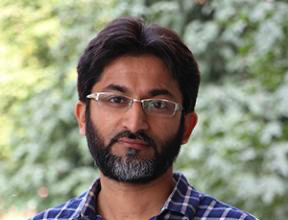M. Ahmed Bhimra

M. Ahmed Bhimra is a MS Thesis student in Computer Vision & Graphics Lab (cvglab) at LUMS Syed Babar Ali School of Science and Engineering.

M. Ahmed Bhimra is a MS Thesis student in Computer Vision & Graphics Lab (cvglab) at LUMS Syed Babar Ali School of Science and Engineering.

Umair Haider is a MS Thesis student in Computer Vision & Graphics Lab (cvglab) at LUMS Syed Babar Ali School of Science and Engineering.

Numan is a senior PhD Student in Computer Vision & Graphics Lab (cvglab) at LUMS Syed Babar Ali School of Science and Engineering.

Muhammad Awais Ather is a MS Thesis student in Computer Vision & Graphics Lab (cvglab) at LUMS Syed Babar Ali School of Science and Engineering.

Content Based Image Retrieval Using Hand Crafted Features Asim Waheed, Khawaja Umair Ul Hassan The project involved solving the Cross-View image matching problem between Satellite view images and Street view images. Many hand-crafted features were calculated, such as Histogram, HOG, Bag of Visual Words and VLAD using SIFT and SURF descriptors. The compiled features would…

Murtaza Taj earned his Ph.D. and M.Sc. degrees in electronic engineering and computer science from the Queen Mary University of London (QMUL), United Kingdom, in 2009 and 2005, respectively. Currently, he is an Associate Professor at the Lahore University of Management Sciences (LUMS), Syed Babar Ali School of Science and Engineering, Pakistan. He also served as…

Arif Mahmood successfully defended his Ph.D. at Lahore University of Management Sciences in May 2011. Dr. Mahmood’s research interests broadly span the areas of image processing and computer vision. More specifically, he is interested in optimization of image processing algorithms from computational perspective. He worked on fast image matching techniques and developed new bound based…